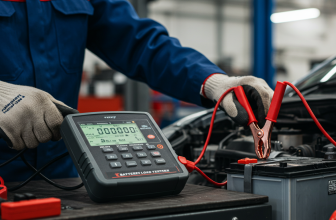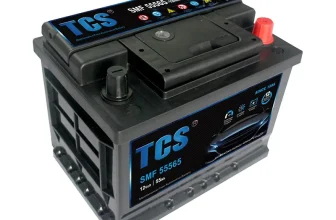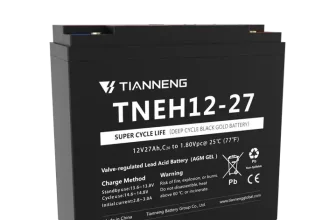If you have had a ride in a golf cart that stalled midway into the golf course, then you have a tale to tell. Obviously, you want to ride your cart uninterrupted. For that, you need to know how long golf cart batteries last on one charge.
A couple of factors may lead to poor performance of your golf cart batteries. You might want to know whether these batteries would last as long even when subjected to varying loads. A load to a battery is any mechanism that draws the battery’s stored charge or current when connected to it.
Therefore, let’s understand the various parameters surrounding your golf cart batteries to get the most out of them. Rest assured, taking care of your golf cart batteries doesn’t require any special skills.
Check Golf Cart Battery Prices
Golf Cart Battery Design
Ordinary golf cart vehicles run on a 4-stroke engine powered directly by a utility supply or battery bank. Since golf carts are mostly for mobility along a golf course, manufacturers had to find a way of powering them off-grid. It is at this point that golf cart batteries prove useful. Four-stroke combustion engines may require a 36- or 48 volts battery. Unlike the earlier golf cart models that relied on electricity, current models run on DC motors.
The construction of batteries or accumulators is very similar, even if the brands differ. A lead-acid battery comprises several lead metallic plates positioned parallel to each other. Each adjacent plate forms the battery’s “positive” and “negative” electrodes. The positive plate is usually the Lead Oxide, while the metallic grid becomes negative. Once the electrolyte (Sulfuric acid + distilled water) is introduced between the plates (positive and negative electrodes), the battery is complete. The potential difference between each electrode is standard at 2 volts. So, a 12v golf cart battery has six pairs of electrodes, each having a potential difference of 2 volts.
A golf cart that requires 36 volts to run would thus need three (12volts) batteries configured in series (12volts each x3=36volts). These days, you can get one battery having a 24v, 36v, and 48v potential difference, thanks to evolving technology. However, batteries with these specifications are for industrial use. Secondly, they’re heavy and huge to fit in the golf cart battery compartment. Many brands, therefore, prefer to cascade smaller, lighter batteries (6v, 9v, or 12v) to attain the required 48 volts to power the golf cart.
Battery Quality and Capacity
Whether new or used, golf cart batteries may run the cart for a certain number of hours. It depends on factors such as;
- battery type (dry or wet)
- capacity (ampere-hours)
- design (ordinary or deep cycle)
For example, four batteries of 12 volts connected in series can last the golf cart between 25 and 40 miles. On the other hand, the same cart machine would cruise 60 miles with only two 48volts batteries connected in parallel.
When you connect golf cart batteries in series (12v x 4), you get a potential difference of 48 volts. It means you’ll get more voltage (48v), but the current supply remains constant per battery. Consequently, configuring two batteries in parallel, say 48 volts, 50 Amps, will result in a 48-volt, 100 Amps battery. The parallel configuration yields double the current capacity while the voltage remains the same.
Golf carts vehicles come with built-in drive motors, which may be electric or battery-operated. So what do you do if the vehicle runs on alternating current (AC)? Golf courses often meander along off-grid terrains. To this end, modern golf cart makers let these machines run on DC motors powered directly off battery terminals.
A DC battery can also power older versions designed for AC power via a built-in DC/AC inverter. In such a case, additional circuitry is required to convert battery current from direct to an alternating sinusoid. Although this technique would produce 220-230VAC, there’s an added strain on the battery to supply more current for conversion.
Check Golf Cart Battery Prices
Battery Maintenance and Storage
The batteries must be without fault for a golf cart vehicle to run efficiently and last longer. Whether it’s a lead acid battery or not, the electrolyte must be impurity-free. Furthermore, the cells (plates) must be fully submerged beneath the electrolyte for electrolysis to occur. Some factors can cause a golf cart battery bank to last less or longer, even on one charge.
- Storage: Exposing batteries to extremely hot environments reduces their lifespan.
- Leakage: At times, golf cart batteries may get pricked during transportation or handling. Battery leakage allows air or dirt or becomes a drainage pathway for the electrolyte to ooze out.
- Poor handling: Sometimes batteries may fall upside down, thus spilling the electrolyte on the floor.
- Exposure to elements: The battery cells shouldn’t be exposed above the electrolyte. Doing so means the plates will be in contact with oxygen/nitrogen and hence would acquire rust. Rust on the plates isolates it from the electrolyte, thus preventing charge particles from reaching the plate.
- Uneven structures: Should a Lead-Acid battery fall, the impact may cause dents inside the battery. If the charge-holding electrodes are dented or partly rusted, they will severely degrade battery performance. A battery in such a condition will not power a golf cart for long.
Golf Cart Battery Configuration
Battery capacity is rated in terms of current it can output continuously per hour (Ampere Hours-AH.) Legit brands often print the specs on the battery pack, such as the potential difference, correct temperatures, capacity (AH), and maximum and minimum charge.
While you can increase your golf cart battery capacity through parallel pairing, you may not realize the benefits if one of them is faulty. Battery manufacturers often recommend linking batteries of similar specs together. Additionally, new and old batteries should not be configured in parallel or cascaded in series. It is for the sole reason that defective batteries will drain new ones, thereby introducing an imbalance in the electrochemical properties.
Golf Cart Battery Charging
How you charge and discharge your golf cart batteries matters a lot. We often don’t charge batteries as indicated on the label. Whether dry gel-based or Lead-Acid, batteries function better when you use the right charger. Of course, the charger should supply a charging current equivalent to that recommended by the manufacturer.
Charging a battery using a high-current charger will damage the battery plates over time. It tends to boil the electrolyte instead of transferring charge particles onto the plates. This way, the electrolyte will evaporate gradually, leaving the top end of the plates exposed to weather elements. Equally important is the way you discharge your batteries. A 12v battery should accumulate charge up to a maximum voltage of 13.8v.
Once used, the manufacturers recommend discharging it up to 10.7v or thereabout. If your golf cart batteries discharge below 1/3 of the battery’s full capacity, problems begin. The same is true for ordinary batteries. On the other hand, batteries labeled “deep cycle” can be discharged below 30% and be recharged to full charge safely.
Low-current or trickle charging is a methodology where very low current charges a battery from near zero to full charge. It’s a slow charge method that takes longer to charge the battery fully. The best way to increase a battery’s lifespan is to maintain a constant charge/discharge cycle. Golf cart batteries should accumulate charge to their full capacity before heading back to the golf course.
Check Golf Cart Battery Prices
The Efficiency of Golf Cart Cars
Another factor that impacts golf cart batteries’ performance is the efficiency of the driving motor. To run the cart seamlessly, the DC or AC motor should draw the required optimum current from the battery. Other than taking care of the batteries, issues such as worn-out tires and overloading consume more battery power.
Riding on rough golf course terrains also requires more battery power supply. This way, the battery bank may not last as long as expected. Worse still, if the golf cart motor is rated for high power consumption, the battery will supply more current than it should.
Should you need to replace your current bank of batteries, ensure to use batteries of the same brand and specs. Deep cycle types are recommended due to their extended depth of discharge.
Wrapping Up
An electrically operated golf cart will, on average, cover between 30 to 40 miles. The results are only valid if the golf course terrain is even and the batteries are new. Smaller batteries (6v, 8v, and 12v) perform much better, last longer, and have a low failure rate. Although not recommended, these batteries let you ride your cart past 50 miles. Golf carts powered by electric motors have much more power than those powered by batteries. They’re more efficient and require low maintenance.
Typical golf cart vehicles should accommodate two persons. Any additional luggage will increase the cart’s weight, thus drawing more power from the batteries. Lesser cart weight means an extended running range and less strain on the battery power bank. Similarly, riding on slippery off-road pathways exerts more pressure on the batteries.
Check Golf Cart Battery Prices







